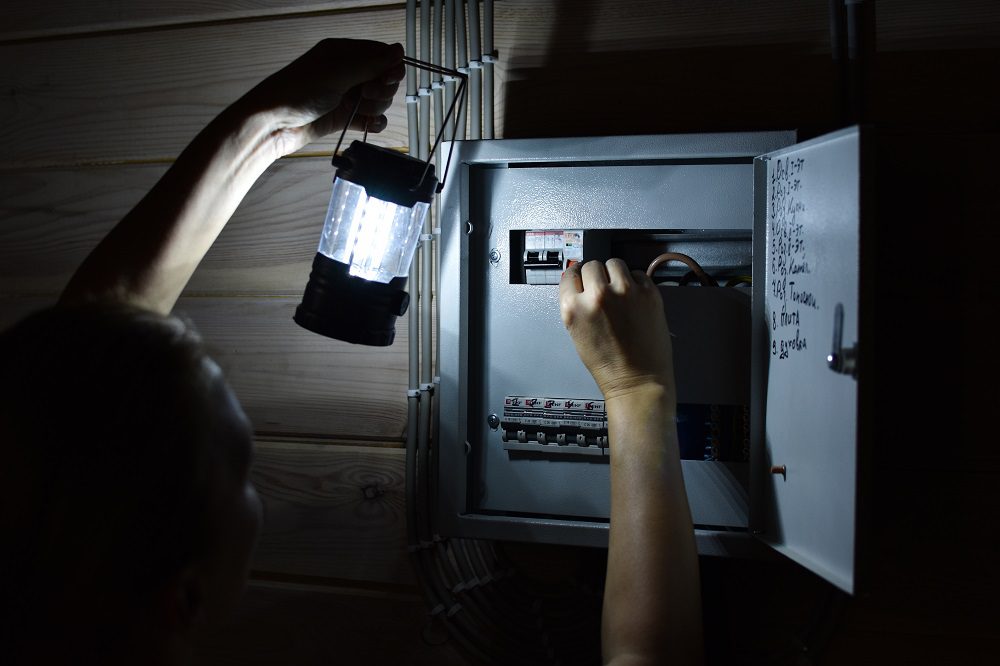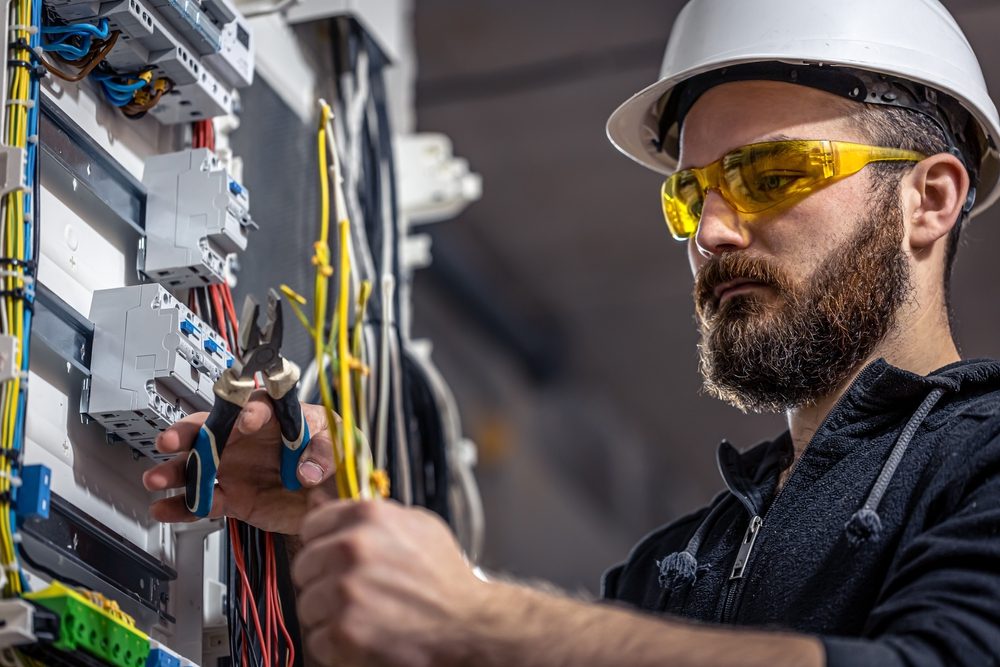Electrical outlets are not supposed to smell like burning plastic or hot wiring. That odor signals heat where it does not belong, and heat means risk. In Charlotte homes, the most common causes are loose connections, overloaded circuits, aging receptacles, or damaged cords. Ignoring it can lead to arc faults, melted insulation, and in the worst cases, a house fire. If a wall plate feels hot, the faceplate is discolored, or you notice that sharp “hot dust” or “fishy” smell, it is time to act.
Ewing Electric Co sees these calls across Charlotte every week, from Dilworth bungalows to Ballantyne townhomes and new builds in Steele Creek. The pattern is consistent: a small warning shows up first, then a bigger problem follows. Fast action saves wiring, protects appliances, and prevents property loss.
What that smell usually means
Electrical components are designed to run cool. A burning odor means resistance is creating excess heat. The source tends to fall into a few categories:
Loose terminal screws inside the outlet. A weak connection creates micro-arcing. The arc pits the metal, raises resistance, and bakes the plastic yoke. Homeowners often notice intermittent power, flickering lamps, or a plate that feels warmer than the room.
Backstabbed wiring on older receptacles. Many homes in Charlotte built from the 80s through the early 2000s used push-in “backstab” connections. Over time, those springs lose tension. The result is a poor connection and heat.
Overloaded circuits. Space heaters, hair dryers, air fryers, and microwaves draw heavy current. If several are on the same 15-amp circuit, the breaker might not trip right away, but the outlet contacts can overheat and deform.
Worn or cheap receptacles. Budget-grade outlets with thin contacts lose grip on plug blades. A loose plug creates arcing and heat, which produces that hot plastic smell. Many original receptacles in Charlotte homes are beyond their expected service life by 20 or more years.
Damaged cords and plugs. A partially broken plug, bent blade, or frayed cord concentrates current on a small contact area. That spot overheats quickly and can scorch the outlet face.
In kitchens and baths, combine these issues with moisture and you get corrosion, which further raises resistance and heat. In garages and crawl spaces, dust and insect debris inside the box can smolder when hot.
What to do the moment you smell it
Safety first. Do not wiggle or re-seat the plug to “fix” it, and do not spray anything on the outlet. Basic steps help contain the problem until a licensed electrician arrives.
- Unplug the device and stop using the outlet immediately. If the outlet feels warm or you see smoke, turn off the breaker labeled for that room. If you cannot find the correct breaker, shut off the main breaker. If flames or heavy smoke appear, evacuate and call 911. Call a licensed local electrician for inspection and repair. Search “electrical repair Charlotte NC” or contact Ewing Electric Co directly.
These steps protect wiring inside the wall. Heat can travel along copper and damage insulation a few feet away from the outlet itself, which is why a proper inspection matters.
What an electrician will check and fix
A professional will remove the cover plate, test the circuit, and pull the receptacle forward to inspect the terminations and insulation. The checklist usually includes thermal scanning, a torque check on terminals, and continuity tests to confirm there is no hidden damage upstream or downstream.
If the outlet shows heat damage, it gets replaced. The best solution in most Charlotte homes is a commercial-spec, tamper-resistant receptacle with side-screw terminations. Back-wired clamping mechanisms are acceptable on quality devices because they use a pressure electrical repair cost plate, not a spring stab. The electrician may also pigtail copper conductors with proper wire nuts or Wago connectors to improve future serviceability.
Where heavy loads exist, the fix often includes circuit balancing. For example, a kitchen microwave and toaster should not share a 15-amp small appliance circuit. A correct layout uses two or more 20-amp GFCI-protected circuits for countertops, per code. In older ranch homes in Madison Park or Starmount, adding a dedicated 20-amp circuit for a space heater or window AC can eliminate chronic overheating at receptacles.

If aluminum branch wiring is present in older neighborhoods like Sherwood Forest or Commonwealth, repairs require special connectors rated for copper-to-aluminum splicing and CO/ALR devices or an approved pigtail method. This should never be a DIY job.
Common scenarios seen across Charlotte
Space heater season. January calls jump in SouthPark condos and University City apartments when portable heaters run on 15-amp bedroom circuits. The outlet warms, the faceplate yellows, and sometimes the plug fuses to the receptacle. The fix is usually a new commercial-grade receptacle, a dedicated circuit for the heater if usage is frequent, and a reminder to keep heaters on low draw or avoid extension cords.
Kitchen stack-ups. In Plaza Midwood kitchens, it is common to see a coffee maker, toaster oven, and air fryer on one strip. The breaker may hold, but the first outlet in the chain bakes. Adding a second 20-amp small appliance circuit and replacing the first-outlet GFCI with a fresh, listed device solves the problem.

Garage freezers. A garage receptacle that feeds outdoor lights and a freezer can be borderline. Startup current from the compressor stresses a worn outlet. Upgrading to a dedicated, GFCI-protected circuit with an in-use weather cover for any exterior ties is the right move.
Kids’ rooms and loose plugs. Game consoles and chargers cycle on and off, and old outlets lose spring tension. Replacing with tamper-resistant, spec-grade receptacles stops arcing and improves safety.
How to tell if the issue is the outlet or the device
A quick isolation test helps. If the same device causes heat or smell at more than one outlet, the device is likely at fault. Look for a deformed plug, scorch marks, or a wobble in the blades. If different devices trigger the smell at the same outlet, the outlet or circuit is the problem. Either way, stop using it until tested. An electrician can measure voltage drop under load; more than about 5 percent at the receptacle is a concern and correlates with heat.
Code notes Charlotte homeowners should know
Charlotte-Mecklenburg inspections follow the NEC with local amendments. The most relevant points for outlets are GFCI and AFCI protection and proper grounding. Bedrooms, living rooms, and many finished spaces require AFCI, which helps catch arcing faults before they overheat a connection. Kitchens, baths, laundry, garages, and exterior receptacles require GFCI to protect against shock. In many older homes from NoDa to Wilmore, upgrading the panel breakers to combination AFCI/GFCI or installing listed devices at the first outlet brings real safety gains and reduces nuisance heat events from weak connections.
Another key point is box fill. If too many conductors are crammed into a small electrical box, heat builds and insulation can rub through. Upgrading to a larger, properly rated box during outlet replacement is a small cost that pays off in safety and serviceability.
Prevention that actually works
Most homeowners do not need a full rewire. A few smart moves prevent the burning smell from ever returning:
- Replace worn receptacles with spec-grade, tamper-resistant models and use side-screw or clamp-back wiring, not spring backstabs. Spread heavy appliances across separate circuits; avoid running two high-wattage devices on the same receptacle. Retire extension cords for permanent loads; add a dedicated outlet instead. Schedule a panel and receptacle torque check every 3 to 5 years, especially after renovations or appliance upgrades. Install AFCI/GFCI protection where required and test them monthly.
A trained electrician can complete a whole-home outlet audit in two to four hours for most Charlotte houses. The visit often finds a handful of loose terminals and a couple of tired devices ready to fail.
What this means for resale and insurance
Insurers pay attention to electrical fire risk. Claims from outlet fires often tie back to neglect: scorched receptacles, wrong devices on aluminum wiring, or DIY splices. Documented upgrades, like AFCI protection and spec-grade receptacles, strengthen your position and smooth inspections during a sale. Buyers in neighborhoods like Myers Park and Elizabeth expect modern safety features even in historic homes.
Why Ewing Electric Co is a solid choice for electrical repair in Charlotte
The team works residential every day, so the solutions fit real floor plans and real habits. They stock the right devices on the truck, including CO/ALR options when required, so most repairs finish in one visit. Pricing is clear, and recommendations are practical: fix the heat source, correct the circuit, and prevent a repeat. That approach has made Ewing Electric Co a go-to for electrical repair Charlotte NC searches and repeat clients from South End to Highland Creek.

Ready to stop the smell and fix the risk?
If an outlet smells like it is burning, unplug the device and call. Ewing Electric Co schedules same-day diagnostics across Charlotte and nearby areas, including Matthews, Huntersville, Pineville, and Mint Hill. The electrician will find the weak link, replace what is damaged, and verify the circuit is safe under load. Book now to protect your home, your wiring, and your time.
Ewing Electric Co provides dependable residential and commercial electrical services in Charlotte, NC. Family-owned for over 35 years, we handle electrical panel upgrades, EV charger installation, generator installation, whole-home rewiring, and 24/7 emergency repairs. Our licensed electricians deliver code-compliant, energy-efficient solutions with honest pricing and careful workmanship. From quick home fixes to full commercial installations, we’re known for reliable service done right the first time. Proudly serving Charlotte, Matthews, Mint Hill, and nearby communities.
Ewing Electric Co
7316 Wallace Rd STE D
Charlotte,
NC
28212,
USA
Phone: (704) 804-3320
Website: https://ewingelectricco.com/ | Google Site
Social: Facebook | Instagram | Twitter
Map: View on Google Maps